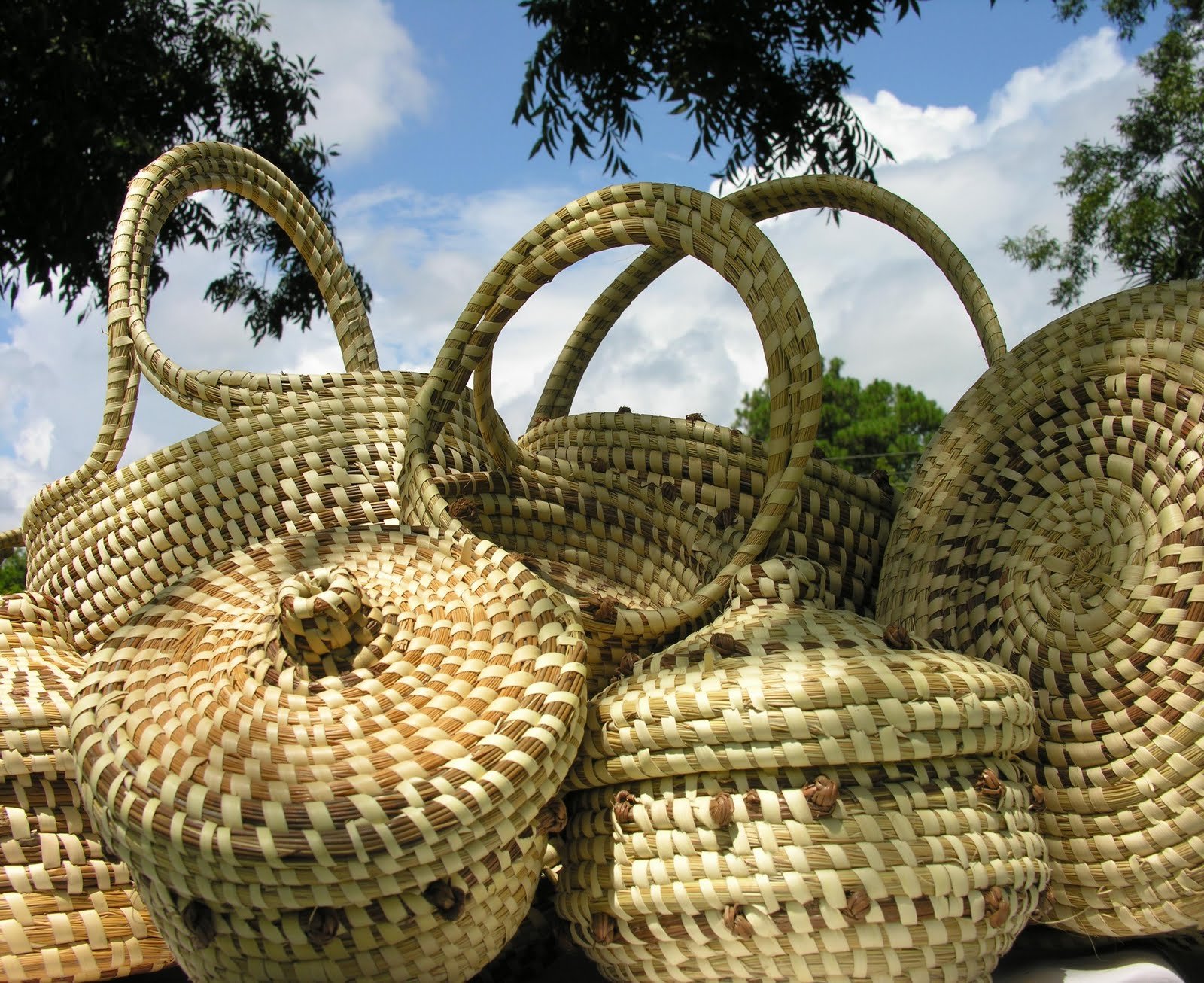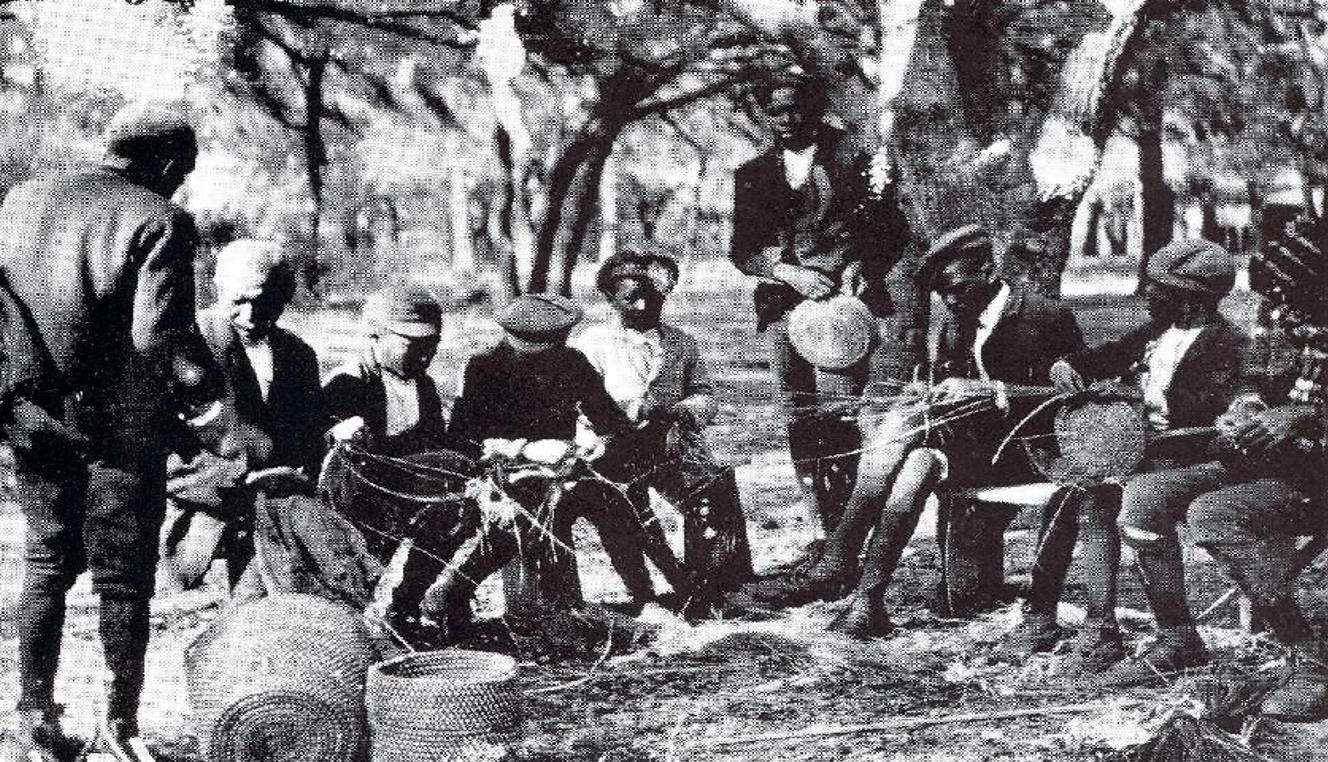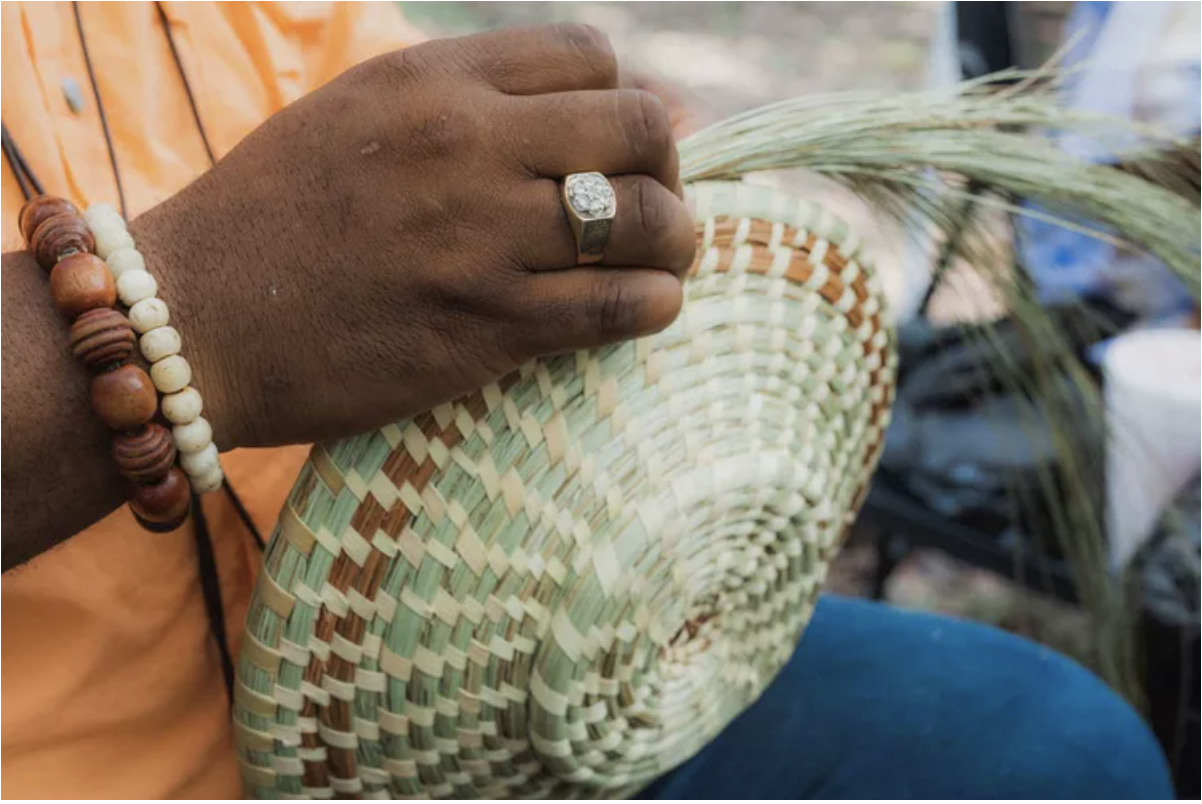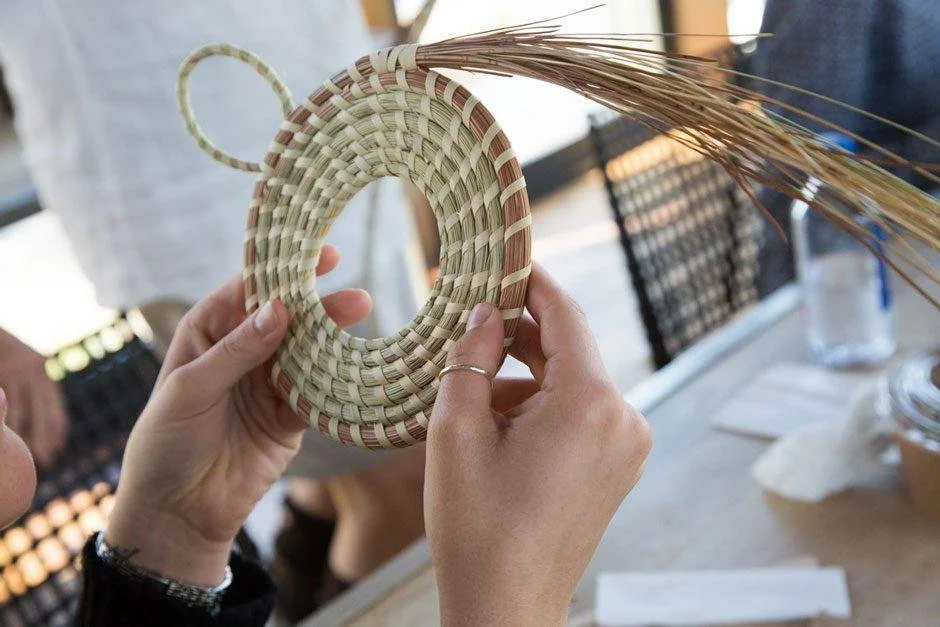Sewing Sweetgrass Baskets: An Interview with Michael Smalls

Michael Smalls is a 7th-generation basket sewer. His great grandmother taught him the technique when he was young, and over the past 15 years he has pursued his passion for basket sewing and education.
Sweetgrass basket sewing is a practice found within the Gullah culture. A technique brought from Sierra Leone to the southeastern United States by enslaved West Africans, sweetgrass basket sewing began as a technical skill, the end-product a useful tool. This once practical technique has since evolved into an art form, one in which Smalls devotes much of his time and energy to pursue and preserve.
Anna Brown: Would you explain a bit about sweet grass basket sewing?
Michael Smalls: It's a technique that was brought from Sierra Leone, West Africa some 400 years ago by my ancestors. They were brought to the lowcountry of South Carolina, Georgia, and Florida–the baskets were one of the traditions that they brought along with them. During that era, it was more of a working tool, and as our generations came down, we got more decorative–the way you see all the different styles, sidings and circles. We use four different materials; the major material is sweet grass. We also use pine needles, bulrush or black needle rush, and palmetto fronds. The people from Mount Pleasant, all of those slaves that were brought on those plantations, searched the swamps and the wooded areas for something that was similar to what they used in Africa. And they found the spartina grass. They named it sweet grass because of the aroma. It's a very peculiar grass because it doesn't grow everywhere. You have to kind of find it…where it is. We harvest during the summer months and then it starts seeding or flowering, and it dies off during the winter. But over the last few years, the grass has become very scarce because of a lot of development in our area and we are not able to get the grass like we want anymore.
Photo Source: https://bdcbcl.wordpress.com/2018/11/08/sweetgrass-baskets-in-the-lowcountry/
Anna Brown: Could you tell me about your relationship with sweetgrass basket sewing specifically? What inspired you to become the artist that you are today?
Michael Smalls: I learned when I was about seven years old. I was very interested in learning; I wasn't made to learn how to do it. I just kind of hung around my great grandmother who taught me how. Of course I got away from it, went through school and different jobs, and after really finding out the history and the importance of the basketry later on in life, I decided that I wanted to try to teach about it and preserve it for another generation.
What's fascinating to me is that there's no set pattern to any of the baskets. Everything is just by knowledge, feel, touch, your creativity. There's so many different styles or different designs that we can do with the grass. We kind of manipulate it to what we want it to be. I think some of the patterns that come forth are actually how you're feeling at that point. A lot of times we aspire to make something and it turns out there's something completely different. I would start with something in mind, and before I knew it, it would evolve into something else. I've made pieces where I made one, and then couldn't do it again.
Photo Source: https://www.travelandleisure.com/thmb/VJK3zFeqXAJWLJBwt-Zx9H5bIJo=/1500x0/filters:no_upscale():max_bytes(150000):strip_icc()/TAL-michael-smalls-basket-weaving-MITCHELVILLE0223-0b102ce477ed4b72b3d3de1ae7cfb86d.jpg
Anna Brown: What would you say is your main motivation for sewing baskets today and continuing this practice?
Michael Smalls: Wanting to get the next generation to learn how to do it, and the community itself. Our young people are not really wanting to learn–I think because they grew up around it, like myself. Your uncles, your aunts, your grandmothers, your mom, everybody made baskets and all we saw it as, at that time, was a basket. Like I mentioned earlier, it wasn’t until I actually learned the history behind the basket, what it really represented, that I got this deep appreciation of wanting to preserve it. Dino Badger, who’s an apprentice of mine, we agree that anyone [Gullah or not] that's willing to learn, we're willing to teach. Back in the community, where I grew up, you have a lot of people thinking it's an African American thing, it's a tradition that's within the Gullah culture that we don't want anyone to take away from us, and they don't teach anybody. But we don't think like that. If you want something to be passed on to the next generation, then you teach whomever is willing to learn.



